

Frank Lloyd Wright History
at Florida Southern
Frank Lloyd Wright History at Florida Southern College
Frank Lloyd Wright (1867-1959), considered by many to be the greatest of all American architects, pioneered a style of “organic architecture” that connects buildings harmoniously with the natural landscape around them. Twenty-eight of Wright’s projects are National Historic Landmarks, including the campus of Florida Southern College.
From the date of Wright’s first visit to the Florida Southern campus in 1938, he delivered 18 unique and distinctive building designs over the course of more than 20 years, longer than any other commission in his career. Thirteen of his proposed structures were funded and built, one of them posthumously. This easily makes Florida Southern the world’s largest single-site collection of Wright’s architecture for one client, as well as his only executed design for a college campus.
Founded in 1852 as a Methodist seminary, Florida Southern is the oldest private college in the state. The school relocated several times during its early history before settling in Lakeland in 1921, purchasing a 67-acre defunct citrus grove to serve as its new campus. Despite losing the majority of its enrollment at the outbreak of the Great Depression, Florida Southern survived and recovered, thanks largely to Dr. Ludd Spivey, the College’s president since 1925. By the late 1930s, Dr. Spivey resolved to find a new architect who could transform the small, obscure college into an institution of national consequence by creating a true “campus of tomorrow.”
Dr. Spivey concluded that Wright was exactly the kind of architect he was seeking.
In January of 1938, Dr. Spivey sent the following telegram to Wright:
Desire a conference with you to discuss the construction of a great educat[ion] temple in Florida. Please collect wire when and where I can see you.
Wright agreed to meet with Dr. Spivey, inviting him to his estate in Wisconsin, Taliesin.
Dr. Spivey expressed his desire to build a new campus unlike any other in the world, saying that it should not reflect the traditions of old but instead embrace new technologies and modern artistic sensibilities. He admitted that he lacked the financing necessary to realize this revolutionary campus, but promised that if Wright would design the buildings, Dr. Spivey would work tirelessly to see the funds raised.
For Wright, this project represented an opportunity to execute his design concepts on a grander scale than any prior commission. However, the school’s unstable finances tempered his enthusiasm. Wright tentatively agreed to redesign Florida Southern’s campus, with a single caveat: he wanted to survey the natural landscape of the grounds before beginning his design work.
On May 8, 1938, at nearly 71 years of age, Wright set foot on the Florida Southern campus for the first time. After receiving a warm welcome from Dr. Spivey and the college staff, he began to survey the landscape. It was far from typically Floridian, situated almost entirely on the slopes of a gently rolling 80-foot hill overlooking Lake Hollingsworth at the school’s southern border. Apart from the College’s seven existing structures, the vast majority of the campus was undeveloped and covered with citrus trees. Wright remarked that he could envision buildings on this landscape that would grow “out of the ground and into the light – a Child of the Sun.”
After spending a few days on campus and touring Central Florida, Wright returned to Taliesin to start his design work for the new campus. He returned a few months later to present his master plan, together with his proposed design for the first building to be constructed, the Annie Pfeiffer Chapel.
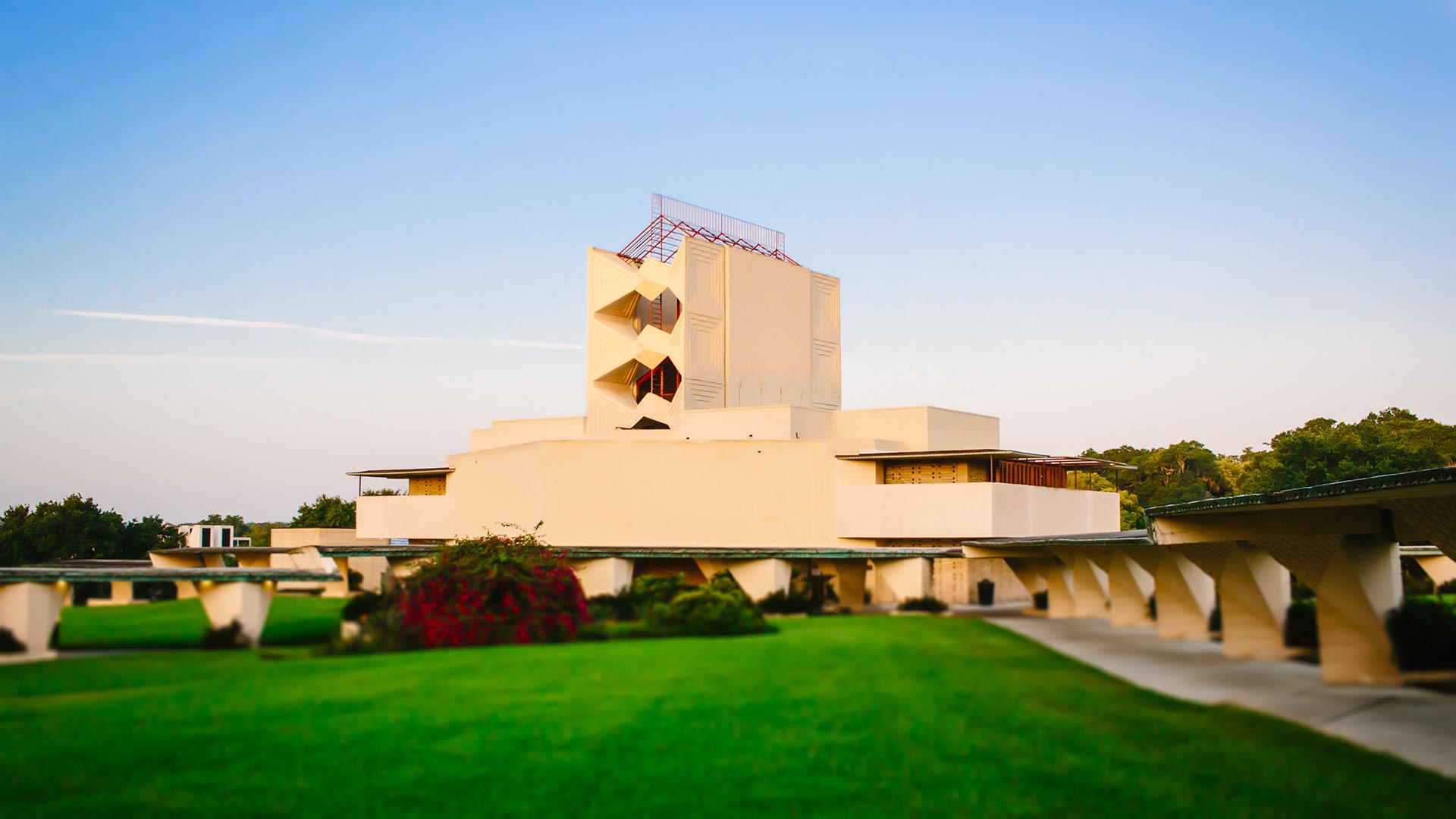
Located in the heart of Wright’s campus plan, the Pfeiffer Chapel – with its iconic, 65-foot-tall bell tower – would be the nation’s first college chapel with an architecturally modern design, its interior defined by massive vaulted skylights framing the natural heavens above.
Construction of the chapel lasted from 1938 to 1941. Three identical Wright-designed seminar buildings, small and functional structures meant to ease the College’s desperate need for more classroom space, were built between 1940 and 1942. The E.T. Roux Library followed, brought to fruition during World War II, despite material and labor shortages. (After the College’s book collection exceeded the building’s design, the Roux Library was repurposed as the Thad Buckner Administration Building in 1970.)
Student labor was employed for the construction of five initial Wright-designed buildings. During wartime, the construction crew – and the College’s student enrollment – was comprised almost entirely of women.
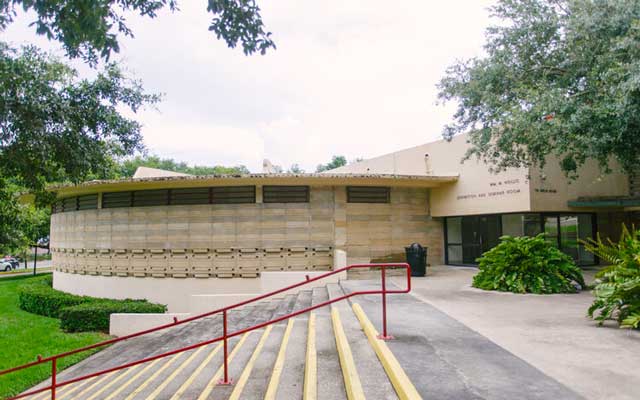
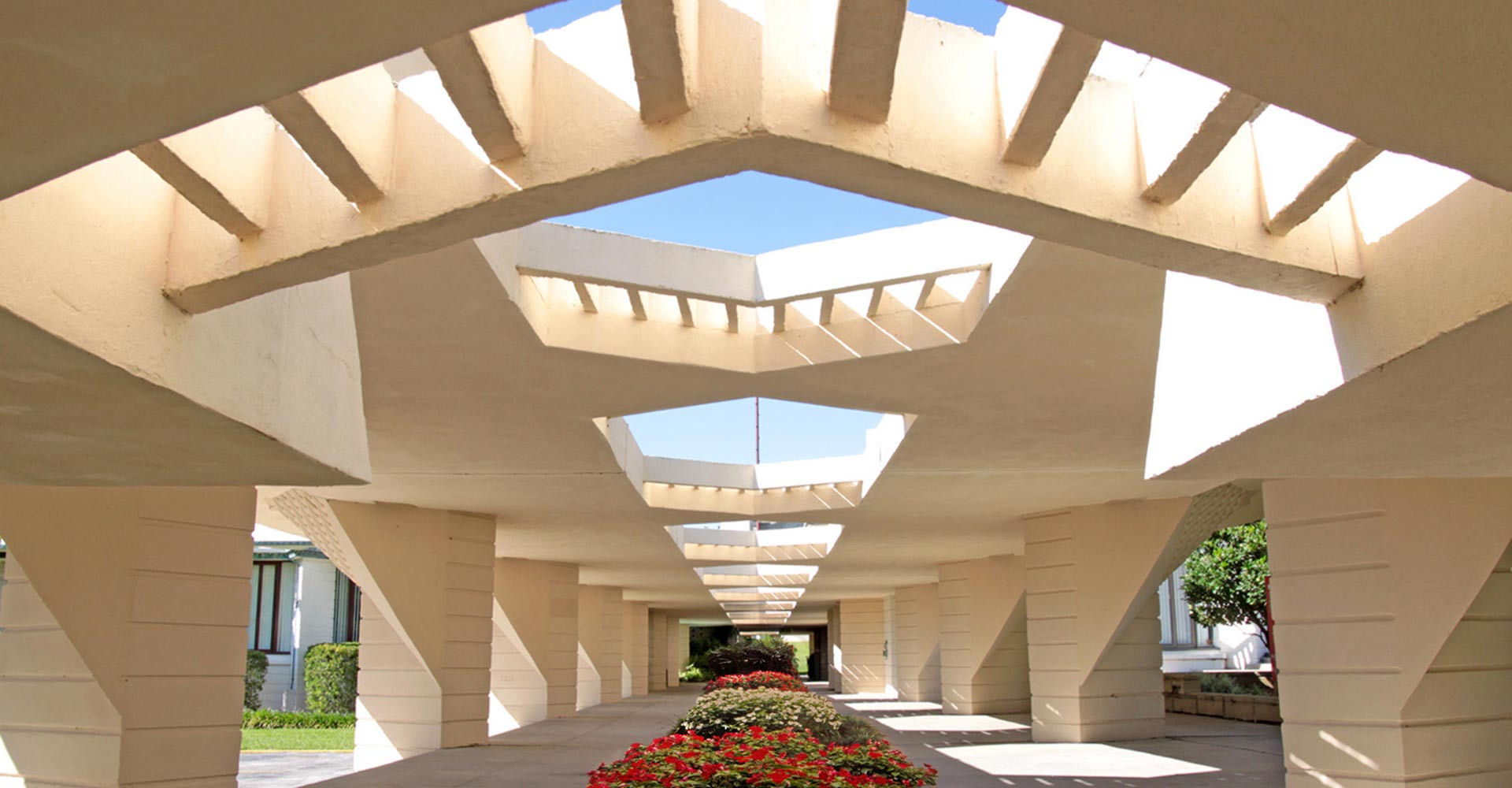
All of the campus buildings designed by Wright were linked by the longest system of covered walkways in his career, which became known as the Esplanade. Stretching more than a mile in total length, the Esplanade features uniformly designed columns that are said to evoke the orange trees that once filled the campus grounds.
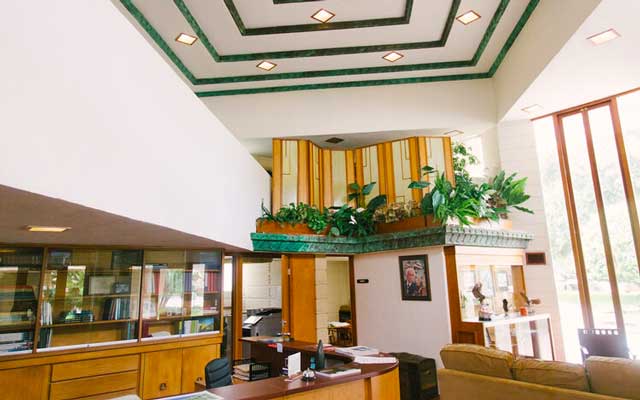
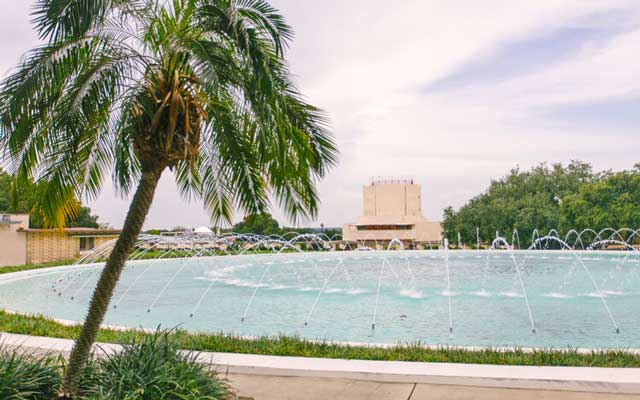
In 1948, three new Wright structures took shape. The Emile E. Watson and Benjamin Fine Administration Buildings became the home of the school’s major offices, including the President’s Office. Completed nearly simultaneously, the Water Dome was the largest Wright-designed water feature in the world. (At that time, the Water Dome project was only partially realized as a circular reflecting pool, as a result of technological limitations. However, Wright’s vision was realized decades later, in 2007, as part of the College’s ongoing efforts to restore and honor the architect’s original plans. Today, this magnificent fountain is capable of creating a full dome of water reaching 45 feet in the air, thanks to 75 water jets that are positioned along the perimeter of the large circular pool.)
Three more of Wright’s designs were constructed in the 1950s:
The Lucius Pond Ordway Industrial Arts Building (1950-1952) was built as a home for the College’s courses in carpentry, metalworking, automobile mechanics, cooking, and home economics. Wright considered this building to be his personal favorite on campus, due to its simplicity and perceived practicality. The centerpiece of the building is the Fletcher Theatre, the only theater-in-the-round of Wright’s design ever constructed. Today, the Ordway Building serves as the home of Florida Southern’s social sciences department.
The Polk County Science Building (1952-1958) is the largest of Wright’s campus buildings and the final building to be completed at Florida Southern within the architect’s lifetime. It contains Wright’s only constructed Planetarium and is one of a small handful of buildings in his career to utilize aluminum for aesthetic elements.
While the Science Building was being constructed, work was completed on the William H. Danforth Chapel (1954-1955), a smaller worship space for weddings and meditation. The Danforth Chapel is noteworthy for containing Wright’s last executed stained-glass window designs.
Dr. Spivey’s retirement in 1957 and the architect’s passing in 1959 brought the continued execution of Wright’s campus plan to an end. The College hired a former Wright apprentice, Nils M. Schweizer, to serve as the new campus architect.
An unexpected addition to Wright’s campus was initiated decades later, however, as part of Florida Southern’s plans to build a Tourism & Education Center for the coordination of Wright-themed guided tours and other interpretive programs. The College and its current president, Dr. Anne Kerr, recognized the opportunity to show guests an aspect of Wright’s campus designs that otherwise had gone unrealized.
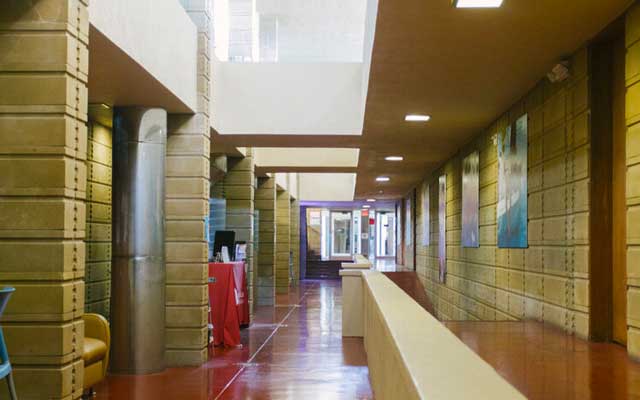
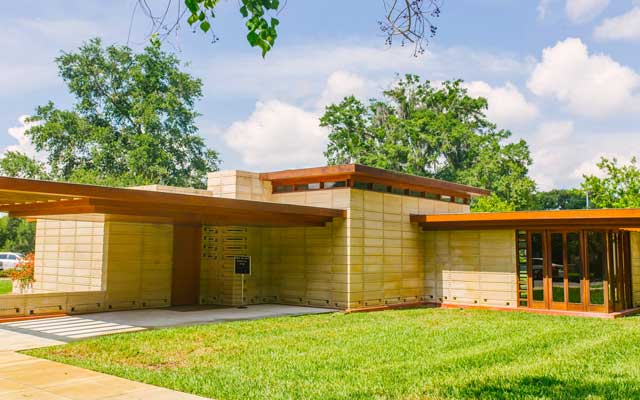
In 1939, Dr. Spivey had commissioned Wright for a single-family house, the first of an envisioned faculty-housing neighborhood on campus. Wright delivered a beautiful and quintessential example of his Usonian style of residential design, a concept for affordable housing for the typical American family. While this home design was not utilized in Wright’s time because of funding issues, its construction was undertaken more than seven decades later as the centerpiece of the Sharp Family Tourism & Education Center. Completed in 2013, the Usonian house joined the ranks to become Florida Southern’s thirteenth Wright-designed structure.